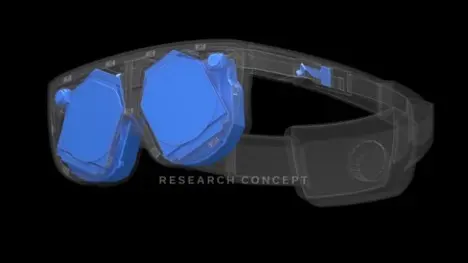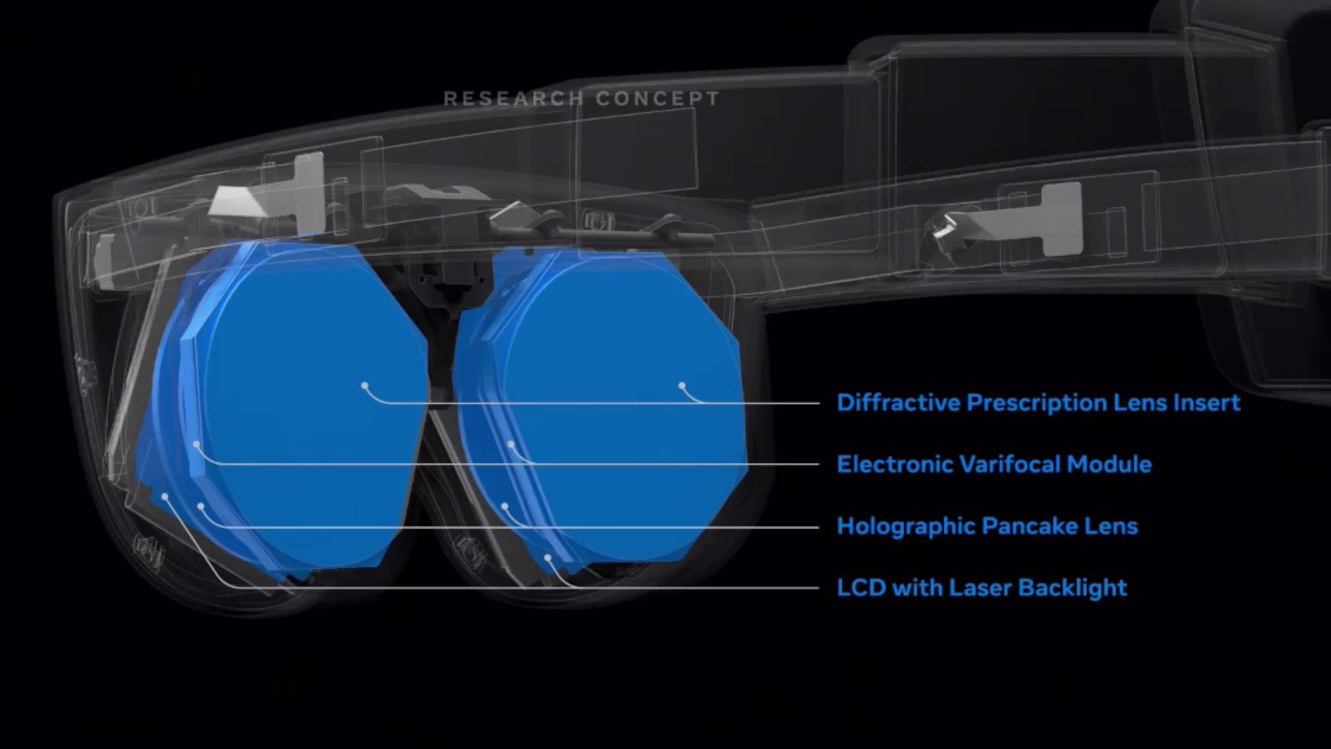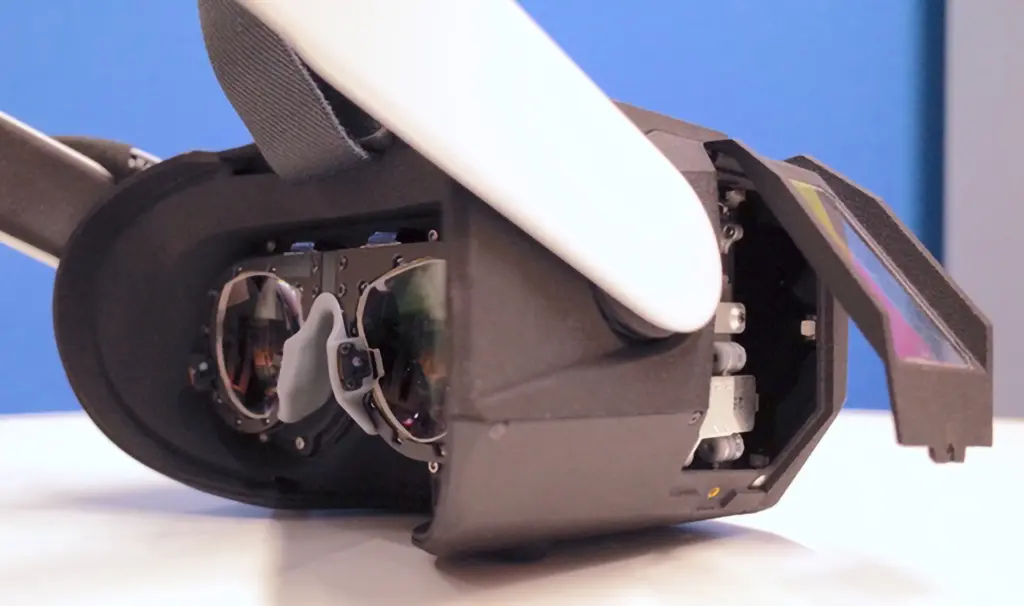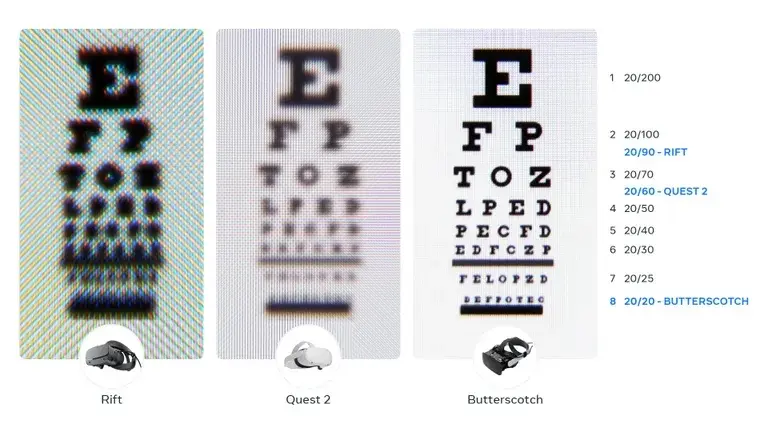Meta, the company formerly known as Facebook Reality Labs, is set to unveil a varifocal VR headset prototype with what they claim will be near-retinal resolution. Varifocal lenses have a variable focal length that adjusts focus as the lens changes magnification, unlike parfocal zoom lenses that maintain focus throughout the zoom range. Varifocal lenses are used in cameras, in autofocus systems—the lens automatically adjusts focus while changing focal length. Varifocal lenses are also used in VR.



The unveiling of the varifocal HMD will be at Siggraph 2023 in August. Last year at Siggraph, Meta showed Starburst, an HDR research prototype with an impressive brightness of 20,000 nits, the highest among known headsets.

Meta said, “We develop a virtual reality head-mounted display that achieves near retinal resolution with an angular pixel density up to 56 pixels per degree, supporting a wide range of eye accommodation from 0 to 4 diopters (i.e., infinity to 25 cm), and matching the dynamics of eye accommodation.”
Meta hopes the new headset will achieve a high level of detail, offering an angular pixel density of up to 56 pixels per degree and accommodating a wide range of eye focus, from infinity to 25 cm.
Retinal resolution refers to a level of detail surpassing the human eye’s discernible capabilities. Angular resolution, measured in pixels per degree (PPD), is the indicator of a headset’s resolution. Most consumer VR headsets don’t quite get to 60 PPD, considered as retinal resolution. Meta’s Quest Pro obtained 22 PPD, Bigscreen Beyond’s compact $999 (when it’s released) HMD claims 32 PPD, and Varjo Aero, at $1990, attains 35 PPD. Some of Varjo’s high-end HMDs (which cost $5500) can achieve retinal resolution within the fovea area of the display.

Meta’s previous research prototype, called Butterscotch, achieved 55 PPD. However, its FOV was only 50-degrees, half that of the Quest 2. But Butterscotch and the headset that will be showcased at Siggraph are not intended for sale. However, it shows you the direction of Meta’s development strategy for its product roadmap.
Current VR headsets employ fixed focus lenses, where the image appears sharp at a predetermined focal distance, usually a few meters away. That creates a conflict between the convergence of the eyes and the accommodation of focus, resulting in eye strain and blurred visuals, and can contribute to dizziness. In 2018, Facebook introduced the Half Dome prototype, which utilized eye tracking to mechanically adjust the display’s position, effectively resolving the vergence-accommodation conflict. However, the mechanical solution created reliability issues, which made it impractical for mass production.
In subsequent iterations, Facebook unveiled Half Dome 2 and Half Dome 3. While Half Dome 2 featured more reliable actuators and a compact design (albeit with a reduced field of view), Half Dome 3 took a new approach without any moving parts. Instead, it employed a stack of liquid crystal lens layers, each activated by applying voltage to achieve different focus distances.
Meta claims its varifocal prototype will support focus adjustment from 25 cm to infinity, enabling users to focus on objects both near and far. The specific details of how this varifocal technology works have yet to be disclosed by Meta.
In 2020, the Director of Display Systems Research at Facebook expressed that varifocal optics were nearly ready for mainstream adoption. However, during the demonstration of the Mirror Lake compact varifocal concept last year, Meta’s CEO, Mark Zuckerberg, indicated that this technology would likely not appear in consumer products until the latter half of the decade.
What JPR Thinks
Facebook/Meta has been remarkable in disclosing its developments in optics and its direction for its future MHDs. Still straddling the fence between consumer (where it really wants to be) and professional (which can support a higher price but at a significant lower number of customers), Meta is trying to position itself against Varjo while competing with Sony.
Meta’s openness is also curious for a company that is not known for openness, and one wonders how much of its disclosure is aimed at its shareholders, many of whom (the biggest ones, by the way) want Meta to spin off Zuckerberg’s folly—and maybe him too. And then there’s the risk of the Osborne effect, where consumers will hold off on buying today’s products because of the promise of a better one tomorrow.
Jon Peddie is the founder and president of Jon Peddie Research, the parent company of Display Daily. He has been named one of the world’s most influential analysts and is an ACM Distinguished Speaker, an IEEE Distinguished Visitor, and named an IEEE Computer Society Distinguished Contributor and Charter member. Jon’s The History of the GPU is the definitive reference for the industry.

